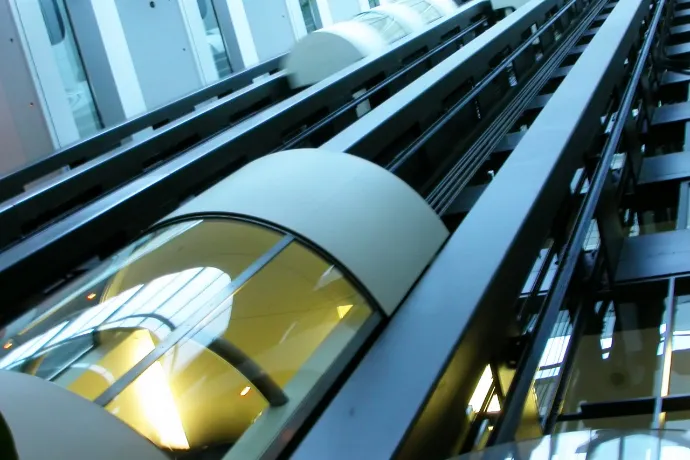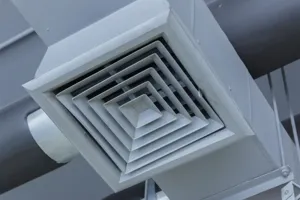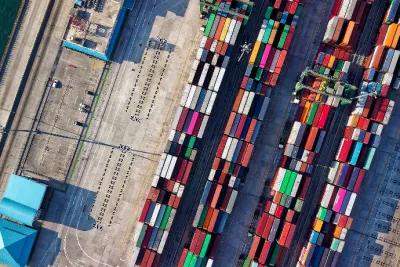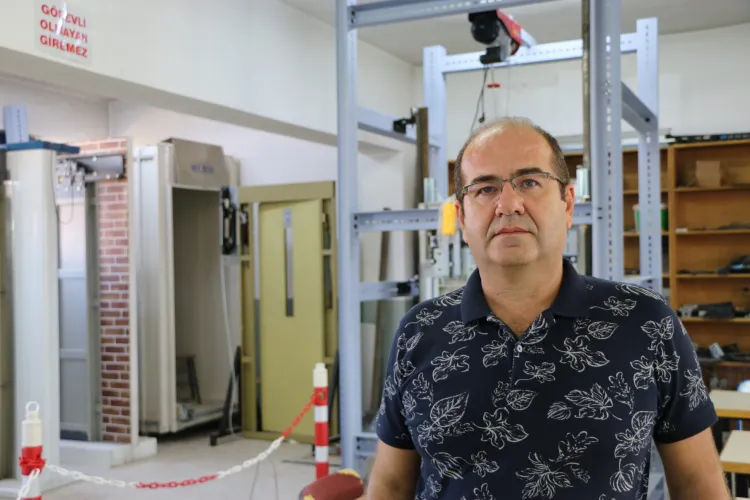
FOREIGN TRADE PERFORMANCE of ELEVATOR INDUSTRY in 2021
Mehmet Öner
Former Chief Tax Inspector of the Ministry of Finance
Chartered Accountant
The year 2021 will remain in our minds as the year of the fight against the coronavirus, which still continues to negatively affect our lives. When we compare it with 2020, it is possible to say that it was a relatively better year for both our country and the world. While the world economy shrank by 3.5% in 2020, it grew by 5.5% in 2021. Our country, on the other hand, showed a growth performance of 1.8% in 2020, positively distinguishing itself from the rest of the world. As a result of its continued growth performance in 2021, Turkey closed the year 2021 with a growth rate of 11%.
In our article, we will try to evaluate the foreign trade performance of the elevator industry in 2021.
Elevator Industry Export and Import Data for 2021
As we have given above, according to the Tariff Numbers 842810 and 843131 used in elevator exports and imports, the sector closed the year 2021 with exports of 300,870,179 dollars and imports of 153,601,152 dollars. As we will mention in the following parts of our article, the sector has demonstrated a successful foreign trade performance in 2021.
When we look at the export and import figures, we see that half of our exports consist of elevators with the code 842810 and elevator parts and parts with the code 843131. On the import side, this is different. While 78% of the imports are made as complete elevators with the code 842810, 22% of them are made as elevator parts with the code 843131. It is possible to understand this picture as follows: While Turkey exports low-profit parts and high-profit complete elevators in equal amounts, it imports 78% complete elevators, making those who sell these products to us more money. The fact that our export price per kilo is almost half of the import price per kilo points to the same issue.
At this point, it should be said: Turkey has proven its maturity as a production capability in elevator and elevator parts; now, it is necessary to focus on complete elevator sales by creating global brands rather than elevator component parts by taking lessons from the mistakes in automotive and textile. We can easily see what good this will do for us by looking at our export price per kilo and our import price per kilo: If we sell the complete elevator system instead of elevator parts, it is possible to increase our sales prices by 50% on a dollar basis. Especially if we can establish a service network abroad that can maintain the complete elevators we sell, it may even be possible to force the 23% profitability rate of OTIS on a dollar basis.
Total export of Turkey for the year 2021 has increased by 33%
While the global growth rate was 5.5% in 2021, our country outperformed the rest of the world with a growth rate of 11%. The share of exports reaching 225 billion dollars in this success is quite large.
Source: TUIK
While Turkey's total exports were 169,650,994,160 dollars in 2020, it increased by 33% in 2021 and reached 225,264,314,222 dollars.
Total export of Elevator Sector for the year 2021 has increased by 20%
In 2021, the elevator industry increased its exports by 20% compared to 2020. This rate, which was below 33%, which is Turkey's total export growth rate in 2021, should also be evaluated by taking into account that the elevator industry increased 7% in 2020, which was a troublesome year in which Turkey's total exports decreased by 6%.
While the export increase rate for the two years between 2019 and 2021 is 25% for all exports of Turkey, the export increase rate of the elevator industry for the two years between 2019 and 2021 is 29%. This success should be celebrated and everyone who contributed to the success should be congratulated individually.
In terms of companies and the economy, it is a sign of success to always go one step forward rather than going back and forth. Shrinking periods after growth periods bring along expensive costs such as the closure of companies and unemployment of employees. One of the main goals of developed economies is to minimize the cost of economic contraction to society and companies through sustainable and continuous growth.
Exports of Elevators Passed the Imports and the Sector has a Surplus in Foreign Trade
As can be seen in the graph of the annual export-import amounts of the elevator industry and the following data table, the export of elevator and elevator components exceeded the imports in 2018.
In 2019, 2020 and 2021, the amount of exports has more than doubled the amount of imports. This situation is important and proud for both our country and the sector. While import figures have been falling rapidly since 2016 due to the stagnation in the construction sector, export figures have been increasing uninterruptedly for the last seven years. The elevator industry is trying to overcome the contraction in the domestic market with exports, and it seems to have succeeded.
The elevator industry, which had a sectoral foreign trade deficit of 119 million dollars in 2015, that is, its sectoral imports exceeded its exports, has been giving a sectoral foreign trade surplus for the last four years. In 2021, this surplus increased to 147 million dollars. This is another achievement that should be appreciated. The elevator industry is a sector that earns net foreign currency, and it continues on its way by increasing the amount of foreign currency it earns every year.
Exporting is a tough money making way compared to selling domestically. It takes a long time and makes it necessary to learn new markets and cultures. The beginning is much more difficult. In the world economy, which has become global and almost turned into a global village, opening up to foreign markets means addressing an enormous market size 100 times the domestic market; as well as striving to gain a place with quality and price in the harsh competitive conditions of the world market, it enables us to be ready at world standards against foreign companies that will enter our domestic market. On the one hand, while being better quality and stronger to attack the world market; on the other hand, it becomes easier to protect our domestic market with our newly acquired talent and power. The elevator industry seems to have understood and successfully implemented the strategy of growing through exports, increasing its quality through exports, and increasing its competitiveness against world giant competitors in the domestic market with the quality it has increased through exports.
We need to increase the price per kilo of our export
While evaluating the export figures, one of the evaluation criteria used in addition to the total export figure is the export price per kilo. If you can export with a decrease in your export price per kilo, it means that you are exporting only by lowering the price and with a price advantage. Such a path means working hard to sell goods cheaply in the coming years.
When we look at our export and import weight prices, we are faced with an interesting situation.
Our export price per kilo is falling and is lower than the import price per kilo. However, import prices per kilo, excluding 2020, are also in a downward trend. In 2021, while the prices per kilo of imports have increased significantly, our export price per kilos seem to have increased slightly.
The increase in import prices per kilo in 2021 seems to be due to the deterioration in the supply and production chain due to the coronavirus. In China, where the elevator industry imports the most, in 2021 due to coronavirus, production disruption and transportation problems seem to have caused this. The fact that the steady decline in the export price per kilo turned into a small increase in 2021 is a sign that we have turned China's shortcomings into some success.
We should always keep in mind that since the imported elevator and elevator parts are products of world brands, it is quite normal for our export price per kilo to be lower than the import price per kilo. We have the opportunity and potential to increase our export weight price by creating a quality perception and brand over time.
In the medium and long term, we need to increase our export price per kilo. The way to this is to increase the quality and technology of the elevators and elevator parts we export and to sell them as a global brand.
As we mentioned in the previous parts of our article, while Turkey exports low-profit parts and high-profit complete elevators in equal amounts, it imports 78% complete elevators, making us more money for those who sell these products. The fact that our export price per kilo are almost half of the import price per kilo points to the same point.
At this point, it should be said: Turkey has proven its maturity as a production capability in elevator and elevator parts; now, it is necessary to focus on complete elevator sales by creating global brands rather than elevator component parts by taking lessons from the mistakes in automotive and textile. We can easily see what this will do for us by looking at our export price per kilos and our import price per kilo: If we sell the complete elevator system instead of elevator parts, it is possible to increase our sales prices by 50% on a dollar basis. Especially if we can establish a service network abroad that can maintain the complete elevators we sell, it may even be possible to overpass the 23% profitability rate of OTIS on a dollar basis.
Export is Our Only Way Out
We make 75% of our exports to 20 countries. The total number of countries we export to is 134.
The more countries we can export to and our exports to countries do not concentrate on one or two countries, the less risk we are in foreign trade. If we can achieve this, the negativities to be experienced in the markets of one or two countries will affect our total sales the least.
On the other hand, we make 65% of our total imports from China. As domestic manufacturers, it is possible for us to solve the supply shortage caused by the corona virus in the Chinese market, which started in 2021 and still continues, and increase our market share, both for our country and for other countries to which we export. Part of our export growth in 2020 and 2021 is due to our good use of this opportunity. We must not lose this advantage we have gained.
When we look at the 20 countries to which we export the most, we see that these countries are made up of neighbouring and nearby countries. It's as if we need to hop on a plane and review the markets of countries a little further away.
As a sector, we should not lose this momentum we have achieved in exports. Even if the domestic market gets active again, export should be one of our company's main priorities. In fact, we should put it on the walls of sales, marketing and all related units by writing, "This company's 3-year goal is to export at least half of its sales" so that no one forgets our goal. Exporting will keep us away from dealing with post-dated checks in the domestic market and the risk of not being able to collect our receivables due to bankruptcy, due to the fact that the sales price is in cash or close to it.
As a final word, we should not make the mistake of textile exporters. Textile exporters, in the days when the sector was active, decreased their export prices as a result of the competition they entered in export prices. The result: Many went bankrupt or were forced to export for peanuts.




























